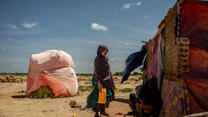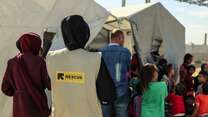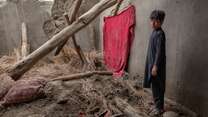The most extreme impacts of the climate crisis are becoming increasingly concentrated in a handful of conflict-affected countries. Seventeen countries currently sit at the epicenter of this convergence of climate vulnerability and ongoing conflict; all 17 are amongst the 21 countries the IRC identified as most impacted by recent aid cuts, based on levels of humanitarian need, exposure to debt distress and least developed country status.
In an era of shrinking resources, mounting climate risks, and systemic breakdowns, the question is no longer whether aid should evolve, but how. At the epicenter of crisis, we already know we must move beyond top-down, short-term interventions toward solutions that are grounded in local realities, adaptable over time, and capable of scaling. This means ensuring locally defined priorities are driving donor and national agendas—and not the other way around—and shifting from isolated projects to approaches that reinforce community agency while strengthening local systems.
Across the IRC’s country offices, technical units, and local partners, we are building upon proven practices, adapting them for fragile and conflict-affected contexts, and rooting them in local knowledge. At the same time, we’re driving innovation so that aid meets the scale and urgency of the challenge. This includes:
- Harnessing behavioral science to design programs that are more intuitive and sustainable;
- Prioritizing cost-effective, high-impact interventions that maximize resources for communities;
- Centering people-first partnerships with local actors, ensuring their expertise and decision-making shape program design and implementation;
- Adapting a systems thinking approach to design systems-level solutions;
- Maintaining flexibility and adaptability, allowing interventions to adapt to rapidly changing conditions in protracted crises.
This report describes how the IRC advances a model of resilience that is research-informed, systems-led, and community-rooted. At a time of mounting pressure to be more cost efficient and streamline programs, we believe it is imperative for us to double down on what already works in program design—because it is the difference between high-impact and ineffective programming. By building on what already works while adapting it for the realities of fragile contexts, we ensure programs are relevant today and sustainable tomorrow, ultimately strengthening the capacities of communities and local systems to respond to future shocks.



